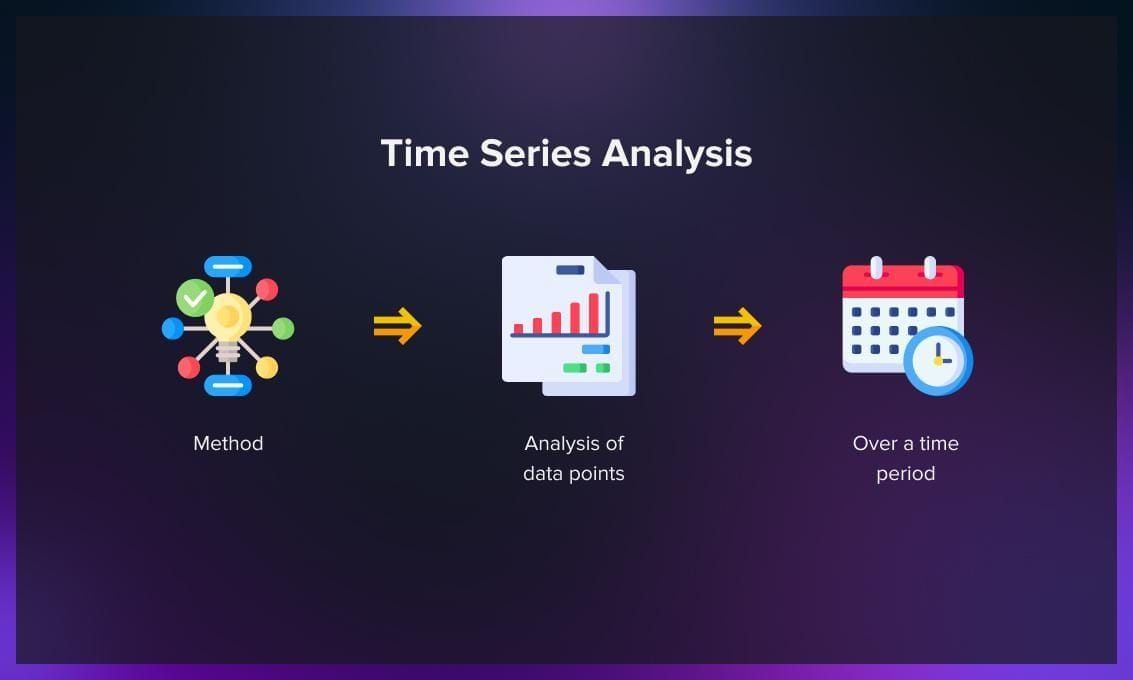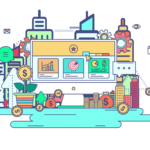
Introduction
In an increasingly data-driven world, understanding past patterns to predict future trends has become a powerful asset for businesses, governments, and individuals alike. Whether it is forecasting stock prices, energy consumption, or customer demand, time-series forecasting stands out as one of the most practical applications of data analytics. The surge in digital data has led to the widespread adoption of sophisticated data analytics tools that make time-series forecasting not only more accurate but also more accessible.
If you have ever wondered how your favourite weather app predicts a storm next week or how retailers plan for holiday sales, you are witnessing time-series forecasting in action. For aspiring professionals seeking to master this art, a Data Analyst Course can be the ideal starting point. But before we delve into that, let us explore what time-series forecasting is, how data analytics tools come into play, and why it matters today more than ever.
What is Time-Series Forecasting?
Time-series forecasting involves analysing data points collected or recorded at specific intervals over time to predict future values. The key characteristic of time-series data is the chronological order in which it is recorded—such as hourly website traffic, monthly sales revenue, or yearly climate measurements.
This form of forecasting is crucial across industries:
- Retail: Anticipating product demand to manage inventory
- Finance: Predicting stock prices or currency exchange rates
- Healthcare: Estimating disease outbreaks
- Energy: Forecasting electricity usage for grid management
Time-series forecasting enables organisations to optimise their operations, reduce costs, and make informed, proactive decisions based on anticipated future scenarios.
Key Features of Time-Series Data
Understanding time-series data begins with recognising its unique characteristics:
Trend: Long-term movement in data (upward or downward)
- Seasonality: Patterns that repeat at regular intervals (for example, holiday sales spikes)
- Cyclicality: Irregular fluctuations often tied to economic or business cycles
- Noise: Random variation or anomalies in data
These features influence how we model and forecast time-series data. A proper analysis separates the signal from the noise, enabling accurate predictions.
Popular Data Analytics Tools for Time-Series Forecasting
With advancements in software and machine learning, a variety of tools are now available to handle time-series data efficiently. Below are some of the most widely used tools among data professionals:
Python with Libraries (Pandas, NumPy, Prophet, statsmodels)
Python is popular as the go-to programming language for data analysis and machine learning. Its ecosystem offers powerful libraries like:
- Pandas: For data manipulation and handling time-indexed data
- NumPy: For efficient numerical computations
- statsmodels: For traditional statistical models like ARIMA and SARIMA
- Prophet: Developed by Facebook, Prophet is highly effective for capturing seasonality and trend changes in business time-series data
Python’s flexibility and open-source nature make it ideal for custom forecasting solutions.
R Programming
R is primarily a statistical programming language widely used in academia and research. It includes robust packages like:
- forecast: Implements ARIMA, exponential smoothing, and other classic models
- tsibble and fable: For tidy time-series analysis
R is especially strong for visualising data trends and generating reproducible reports.
Microsoft Excel
While Excel might seem basic, its built-in forecasting functions and data visualisation tools make it a helpful starting point for small-scale analysis. Features such as exponential smoothing and trend lines enable users to explore data without prior programming knowledge.
Tableau
Primarily known for data visualisation, Tableau also supports time-series forecasting through drag-and-drop interfaces. Its “Forecast” feature uses exponential smoothing to generate predictions, making it user-friendly for business analysts.
Power BI
Microsoft’s Power BI integrates forecasting capabilities along with business intelligence dashboards. It enables real-time monitoring of metrics with predictive analytics, providing valuable foresight for decision-makers.
Google Cloud AutoML and Amazon Forecast
For enterprises seeking to scale, cloud-based tools provide robust forecasting options with minimal setup requirements. Amazon Forecast and Google Cloud AutoML provide automated machine-learning solutions that can be trained on large datasets to deliver highly accurate time-series forecasts.
Techniques Used in Time-Series Forecasting
Forecasting is not just about choosing the right tool—it also involves selecting the appropriate modelling technique based on the data’s nature. Some commonly used methods include:
- ARIMA (AutoRegressive Integrated Moving Average): Suitable for univariate time series with patterns but no seasonality.
- SARIMA (Seasonal ARIMA): Extends ARIMA to handle seasonality.
- Exponential Smoothing (ETS): Focuses on recent observations to predict future values.
- Machine Learning Models: Algorithms such as XGBoost, LSTM (Long Short-Term Memory), and Random Forests can effectively handle complex patterns in multivariate time series.
- Prophet: Automatically detects seasonality, holidays, and trend changes—ideal for business applications.
Each method has its strengths and trade-offs, and often, professionals combine multiple models for improved accuracy.
The Role of Data Cleaning and Feature Engineering
Forecasting models are only as good as the data they rely on. That is why data cleaning—removing missing values, correcting outliers, and aligning timestamps—is a critical step. Feature engineering, where new variables such as moving averages or lag values are created, can significantly enhance model performance.
These pre-processing techniques transform raw time-series data into a format ready for predictive modelling. A solid Data Analyst Course often emphasises these steps to ensure learners understand how to prepare data effectively before applying any forecasting technique.
Real-World Applications of Time-Series Forecasting
Time-series forecasting is no longer limited to large corporations. It is transforming operations at various levels:
- E-commerce: Forecasting website traffic and managing digital advertising budgets
- Logistics: Predicting delivery times and optimising routes
- Healthcare: Anticipating hospital admissions to allocate resources
- Agriculture: Estimating crop yields based on weather and soil data
- Telecommunications: Planning network capacity and maintenance schedules
As industries continue to digitise operations, the importance of accurate forecasting only grows.
Getting Started: How to Build Skills in Time-Series Forecasting
For those looking to enter this field or enhance their skills, structured learning is key. Enrolling in a well-rounded Data Analyst Course provides a strong foundation in:
- Statistical and machine learning techniques
- Programming with Python or R
- Real-world projects using forecasting tools
- Data cleaning and visualisation
- Business problem-solving with predictive models
Such courses are often available online and offer the flexibility working professionals or students need.
Conclusion: Embracing the Predictive Power of Data
Time-series forecasting is an essential skill in the modern data landscape. By leveraging powerful data analytics tools, businesses can move from reactive to proactive decision-making, uncovering opportunities and minimising risks. Whether you are a small business owner planning your inventory or a data enthusiast exploring future trends, learning to forecast using time-series data can open up countless possibilities.
The good news? With the right tools and training—such as a comprehensive Data Analytics Course in mumbai—anyone can master this art. The future may be uncertain, but with data analytics, we have the power to predict it more accurately than ever before.
Business Name: ExcelR- Data Science, Data Analytics, Business Analyst Course Training Mumbai
Address: Unit no. 302, 03rd Floor, Ashok Premises, Old Nagardas Rd, Nicolas Wadi Rd, Mogra Village, Gundavali Gaothan, Andheri E, Mumbai, Maharashtra 400069, Phone: 09108238354, Email: enquiry@excelr.com.


















